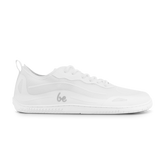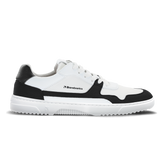The Complete Guide to Barefoot Shoes: From Principles to Selection, Debunking Common Myths
What are true barefoot shoes?
In recent years, the barefoot shoe trend has risen, but many products on the market are just "pseudo barefoot shoes" - they look thin-soled and soft, but lack key design. True barefoot shoes must meet three core principles:
- Zero Drop : The thickness of the sole is consistent from front to back, and the foot is not forced to tilt.
- Wide last design : allows toes to stretch naturally and avoids squeezing and deformation.
- Ultra-thin sole : provides essential protection while retaining underfoot feel.
This article will explain the science behind barefoot shoes, how to tell the real thing from the fake, and debunk common myths.
1. Three major features of barefoot shoes
① Zero Drop
- Why is it important?: The high heels of traditional shoes can change your gait and increase pressure on your knees and lumbar spine.
- Testing method : Lay the shoes flat and observe whether the soles are completely level.
② Wide last design
-
Standard : When standing, there should be at least 1 cm of space between the big toe and the toe of the shoe, and the little toe should not be squeezed.
③ Ultra-thin soles (3mm or less is best)
- Scientific basis : Studies have shown that for every 1mm increase in the thickness of the sole, the sensitivity of the plantar nerves decreases by 15% (Journal of Footwear Science, 2023).
- Practical tips : Try to bend the shoes. Real barefoot shoes should be able to be easily folded into a U shape.
2. How to identify fake barefoot shoes? 3 common pitfalls
Trap 1: Thin soles ≠ barefoot shoes
- Example : Some sports shoes advertise a "barefoot feel" but actually have a 6mm thick sole and a 10mm heel drop.
- Solution : Check the "Heel-to-Toe Drop" data in the product specifications. True barefoot shoes must be 0mm.
Trap 2: Elastic sole misleading
- Marketing jargon : The "super-soft sole" may just be foam material, which still reduces ground feedback.
- Experiment : When standing barefoot, you should be able to clearly perceive the texture of the ground (such as tile joints and pebbles).
Trap 3: Pseudo-wide last design
- Common technique : The toe box looks wide, but the internal space is not actually expanded.
- Testing method : Remove the insole and observe whether the widest part of the sole of the foot matches the contour of the sole.
- : Remove the insole and observe whether the widest part of the sole of the foot matches the contour of the sole.
3. Debunking the Barefoot Shoe Myth
Myth ❶ "Can't you wear barefoot shoes for a long time?"
- Many people experience sore feet or calf tightness shortly after trying barefoot shoes for the first time, mistakenly believing that barefoot shoes are not suitable for prolonged wear. The problem isn't the shoes themselves, but rather the way modern foot muscles have been "spoiled" by traditional footwear. The key lies in retraining the foot muscles —we recommend starting with 1-2 hours daily, limiting the first 1-2 weeks to home activities, and increasing to 2-3 hours of light walking in the third and fourth weeks, gradually rebuilding the plantar fascia and calf muscles. Mild soreness during this process is normal; using a foot roller for 5 minutes daily can help accelerate adaptation.
Myth ❷ "Flat feet are not suitable?"
-
Traditional thinking holds that flat feet require strong support insoles, but the latest sports medicine research has found that barefoot training can actually activate atrophied arch muscles . Initially, transitional shoes should be chosen, along with strengthening exercises:
- Static exercise : Sit with your toes and hold a towel, hold for 10 seconds, then relax. Repeat 10 times.
- Dynamic exercise : Walk barefoot on a yoga mat, intentionally placing your weight on the outside of your feet
Conclusion: Barefoot shoes are a tool, the key is to learn to walk again
The true barefoot experience isn't about what shoes you wear, but about rediscovering the natural connection between your feet and the ground. If you're considering a barefoot lifestyle, we recommend starting with professionally designed barefoot shoes to gradually adapt to your natural gait. Explore our barefoot shoe collection now ! Each pair adheres to the strict standards of zero drop, wide last, and ultra-thin soles to ensure a safe transition.






